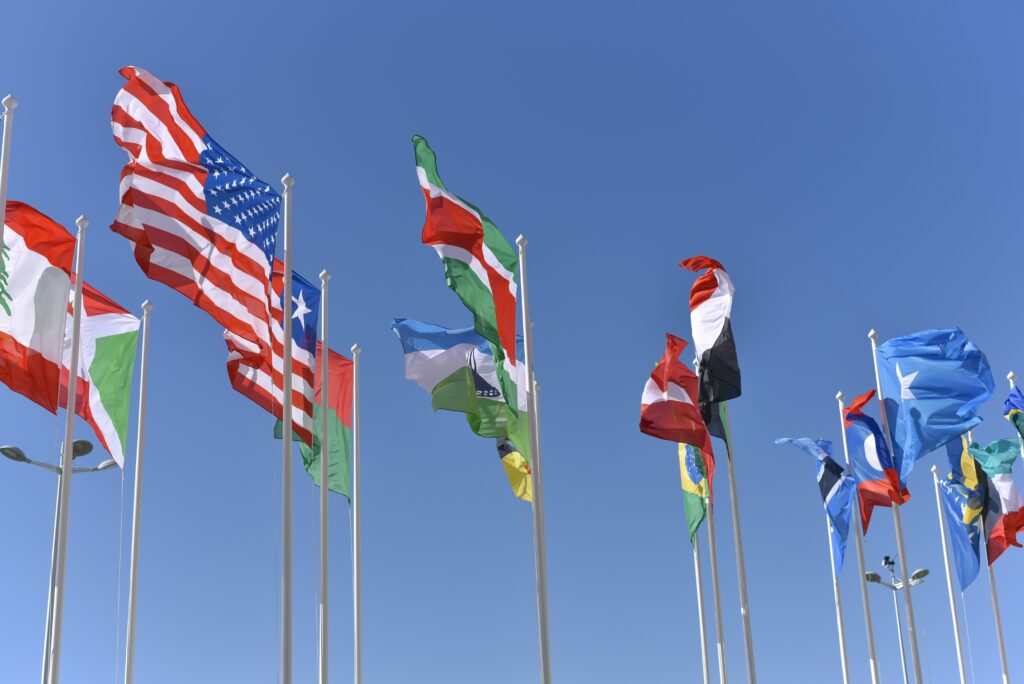The Importance of Understanding Visa Reciprocity

As the world becomes more integrated, international travel is now a commonplace activity for work, education, tourism, and visiting family. But behind the seemingly straightforward issue of traveling across boundaries lies a dense thicket of diplomatic deals, shared history, and political considerations that dictate who needs a visa to go where—and on what conditions. At its core lies the principle of visa reciprocity, notion that burdens worldwide mobility and bears multiple essential connotations for travelers, business, and global diplomacy.
What Is Visa Reciprocity?
In its simplest definition, visa reciprocity is the practice where states provide each other equal treatment to their citizens in regard to visa requirements. If Country A demands visas from Country B citizens, Country B usually applies similar conditions to Country A citizens. IfCountry A gives visa-free access to Country B citizens, it usually demands the same treatment for its citizens upon entering Country B.
This principle rests on the basic diplomatic concept of mutual respect and equal treatment. But visa reciprocity is much more complicated in practice than in this straightforward definition.
The Spectrum of Reciprocity
Not a straightforward system in which countries either have perfectly reciprocal systems or none, visa reciprocity falls on a spectrum:
- Full Reciprocity: Both countries grant the same benefits to the other country's citizens—whether in terms of mutual visa-free travel, the same visa charges, the same processing times, or the same validity periods.
- Partial Reciprocity: Countries offer similar but not identical treatment. For example, both may ask for visas but with varying fees, validity periods, or documentation requirements.
- Non-Reciprocal Arrangements: One country asks for higher requirements than it receives in return, usually reflecting power imbalances or some policy goals.
- Reciprocal Retaliation: Countries deliberately use more restrictive visa policies in reaction to the other's, at times resulting in what diplomats call "visa wars."
Differentiating where countries fall on this spectrum requires not only examining their official arrangements but also the de facto implementation of visa policies.
Historical Context and Evolution
The principle of reciprocity in international travel goes back to ancient civilizations, but the modern visa system in the form we know it now emerged primarily after World War I, when governments began asserting greater authority over their borders. Visa policy became more subtle tools of diplomacy, security policy, and economic strategy in the 20th century.
During the Cold War, visa controls followed geopolitics with minimal movement between Eastern and Western blocs. The fall of the Berlin Wall and globalization led to massive liberalization of visa controls throughout most of the world, particularly in economic unions like the Schengen Area of the European Union.
Today, technical innovation has transformed visa management through the use of biometrics, web-based application systems, and online travel authorizations.. But whereas the mechanisms themselves evolve, reciprocity remains a fundamental principle that governs the international visa regime.
Why Reciprocity Matters
For Individual Travelers
Reciprocity has immediate consequences for the nuts-and-bolts reality of global travel:
- Costs: Reciprocal visa fees range from nominal to hundreds of dollars, making a significant difference in travel costs.
- Processing Times: Reciprocal processing timelines can be the difference between seamless travel and plan destruction.
- Documentation Requirements: Both parties' proof requirements can lead to mountains of documentation, including bank statements, employment proof, travel reservations, and accommodation evidence.
- Duration of Stay: Reciprocal conditions specify the period the visitors can stay in a nation and whether repeated entries are permissible.
- Long-term Effect: Visa histories of previous visa applications and compliance with visa conditions can determine future travel.
Understanding these implications helps visitors anticipate requirements, prepare accordingly, and avoid problems at borders.
For International Relations
Aside from convenience for individuals, visa reciprocity is also:
- Diplomatic Barometer: Visa policy modifications typically mirror improvements or deterioration in bilateral relations, occasionally resulting in other diplomatic alterations.
- Negotiation Tool: Countries employ visa policy in overall diplomatic negotiations, utilizing loose terms as incentives or tight terms as levers.
- Soft Power Process: Visa openness can enhance the international standing and influence of a country, while closed policies can destroy relations.
- Security System: Levels of information exchange and screening facilitate countries to maintain border security with the accommodation of legitimate travel.
These dynamics explain why visa announcements tend to be newsworthy and why reciprocity changes usually generate significant diplomatic activity.
For Economic Development
Visa reciprocity profoundly impacts economic ties through:
- Tourism Flows: Empirical evidence always proves that visa relaxation increases tourism, generating direct economic benefits to destination economies.
- Business Facilitation: Streamlined visa processes ease commercial relations, investment opportunities, and knowledge exchange.
- Labor Mobility: Bilateral work visa policies have an influence on talent recruitment, exchange of skills, and labor markets.
- Educational Exchange: Bilateral student visa policies determine foreign education trends, with long-term implications on innovation and cultural exchanges.
The World Tourism Organization is convinced that simplified visa procedures can release billions of additional tourism revenues and generate millions of new jobs globally.
Case Studies of Visa Reciprocity
The European Union and the United States
Despite intense transatlantic relations, perfect visa reciprocity between the EU and US is not possible. While Americans enjoy visa-free access to all EU members, nationals of several EU countries (Bulgaria, Cyprus, and Romania among them) still require visas to enter the US. This imbalance has consistently triggered EU threats to impose retaliatory visa requirements on American visitors, proving how even friends can be hurt by friction over reciprocity norms.
Brazil's Reciprocity Policy
Brazil has long followed a policy of strict reciprocity, imposing on citizens of other countries the same as Brazilians face when they are abroad. When the United States imposed strict visa conditions and biometric gathering on Brazilians, Brazil retaliated by requiring Americans to go through the same. This policy was later modified to visa waivers for strategic partners, showing how policies of reciprocity evolve as priorities shift.
The African Continental Free Movement Protocol
Africa's persistent effort to implement continent-wide free movement shows the potential and challenges of mass reciprocity schemes. The scheme aims to abolish visa requirements on all Africans traveling across the continent, a move that would significantly redefine intra-African mobility. Application has, however, been spotty with security matters and economic disparities stifling the pace towards universal reciprocity.
Handling Non-Reciprocal Systems
For travelers trapped in non-reciprocal systems, there are several strategies to take into account:
- Advance Planning: Research visa requirements in advance of travel time to allow sufficient time for the possibly involved application process.
- Documentation Diligence: Prepare thoroughly detailed supporting documents to withstand rigorous scrutiny by stringent nations.
- Intermediaries Utilization: Use visa services or travel agencies experienced with difficult countries.
- Appeals Processes Awareness: Know your options if a visa is denied, including reapplication policy and administrative review.
- Policy Monitoring Changes: Monitor changes in bilateral agreements that would affect visa terms.
These measures cannot remove the inherent disadvantages in non-reciprocal regimes but can help reduce their impact.
The Future of Visa Reciprocity
Several trends are likely to shape visa reciprocity in the coming decades:
- Technological Integration: Biometric recognition, blockchain certification of travel papers, and artificial intelligence-driven risk assessment will overhaul visa management.
- Regional Integration: More regions are likely to follow the EU model in creating multi-country visa regions with common external policies.
- Climate Migration Pressures: Climate-change-displaced groups will challenge existing reciprocity frameworks.
- Security Versus Openness: The tension between securitizing borders and openness to travel will remain to dominate policy discourse.
- Economic Competitiveness: Talent-hunting countries, foreign investors, and tourist nations will increasingly view restricting visa access as economic costs.
These trends suggest that although the policy of reciprocity will remain dominant, its practice will be increasingly subtle and sophisticated.
Conclusion
Visa reciprocity is far greater than administrative rituals or border processes. It testifies to basic international norms, geopolitical facts, and has an important impact on human mobility in our global world. A recurring business traveler, a potential student, a tourist business person, or just someone who enjoys thinking about the next vacation, visa reciprocity has something to speak to you, something offering context for making sense of global regimes of mobility.
As countries go on balancing security interests, economic opportunities, and diplomatic ties, visa policies will continue to be dynamic and multifaceted. By understanding the significance of reciprocity in this framework, visitors and policymakers can better understand the dynamics governing our ability to enter and exit countries—and strive for visa systems that meet both security interests and the interests of international exchange.















